
Samsung has a massive lead when it comes to market share in Android, with a large number of handsets aimed at all levels of the market. Their top tier devices obviously get the lions share of the attention though and the most recent announcements are the Galaxy Note 5 and the larger version of their Edge device, the Galaxy S6 Edge+.
While Samsung’s first curved screen phone, the Galaxy Round was way off base with what the market wanted, the Galaxy Note 4 Edge launched alongside the Galaxy Note 4 at this time last year was the first step in a more consumer friendly direction, winning a few fans with the design. Whereas the Note 4 Edge had only a single curved edge, the Galaxy S6 Edge released earlier this year introduced a curved edge on both sides – and from rumours coming out of Samsung, it’s this model rather than the standard Galaxy S6 which has been selling more.
There’s no denying that the curved edge has ‘curb’ or more accurately ‘curve’ appeal in a retail setting. It looks good and the average consumer is drawn to the dual curve display like moths to a flame.
The utility of the curved edge is still being worked on by Samsung, and it’s always been that rather than the innovation in technology that the curved edge display is that’s been important. Samsung has introduced some interesting new features to take advantage of that.
Samsung launched the Galaxy S6 Edge+ on the 4th of September in Australia – all the major Australian telcos are getting the S6 Edge+ where it’s available on a number of plans.
It’s a heck of a phone when it comes to the hardware, but that too is reflected in the price which starts at $1,199 for the 32GB model and goes up to $1,299 for the 64GB model – there is no 128GB option and the phone has no microSD card slot.
Samsung announced the Galaxy S6 Edge+ in White Pearl, Black Sapphire, Gold Platinum and Silver Titanium, but it’s only the White Pearl and Black Sapphire models we’ll see here in Australia – though Samsung does like to refresh their range with new colour options as the year progresses so look out for that down the track.
So, with that in mind, should you be buying a Galaxy S6 Edge+? Well, let’s see.
- Still limited utility in the curved edge display
- Curved screen and large size makes phone unwieldy to hold
- Pretty to look at but the glass back is still a worry
- That price
Hardware
Build quality and design
The Galaxy S6 Edge+ is a fine piece of equipment. It feels great, the phone has been really well made and there’s millimetre precision in the assembly. The phone is at base level an upscaled version of the Galaxy S6 Edge, the design is identical it’s just bigger.
Like the other phones in the Galaxy S6 range this year, the rear of the phone is a one-piece metal and glass affair, that looks stunning – but there’s always a worry with glass as a material – even with the Gorilla Glass 4 that the phone is packing – and with good reason, my review unit came with a pre-cracked display that Samsung still hasn’t swapped out.
That glass and metal rear also means you can’t swap out the battery in the phone – a sticking point for a number of Galaxy S fans this year. The rear also has a bump where the camera pokes through – but once you use the camera, you can almost forgive that design consideration.
The front of the phone is of course dominated by the curved screen which has been enlarged to 5.7” from the 5.1” on the standard Galaxy S6 Edge. The screen remains a Super AMOLED and it’s still QHD (2560 x 1440) resolution so it’s less pixel dense, but you get more screen.
The curved display on the front paired with the glass/metal construction leads to the same issue I’ve had since the Galaxy S6 Edge was launched. The smaller sides feel ‘sharp’ and the metal/glass makes the phone more slippery. This is magnified by the sheer size of the phone – it’s incredibly easy for the phone to slip out of your hand by accident.
The front of the phone also has the usual centre mounted oval home button, though Samsung began putting a fingerprint sensor in there on the Note 4/Note 4 Edge last year and to be honest it’s working a lot better than the Note Edge did last year.
There’s still capacitive buttons on the S6 Edge+, it’s something that’s here to stay for the foreseeable future for Samsung – it’s their design and they’re sticking to it.
Button placement is similar to other Samsung phones – volume on the left (it’s a split 2-button setup rather than a rocker) and power on the right. The SIM card slot is located at the top of the phone and for the S6 Edge+ Samsung has removed the IR blaster. The bottom of the handset is quite busy with a headphone jack, microUSB port and a series of drilled holes hiding an external speaker.
Overall, the design is just there – Materials, looks, everything, Samsung knows what looks good and this is where it’s at, unfortunately for me the curved display just doesn’t feel great to use in the hand.
Fingerprint
Wow. That’s all I have to say about the fingerprint scanner. Unlike the fingerprint sensor on the Note 4 Edge, the fingerprint sensor on the S6 Edge+ is fast, it works and it’s wonderful. There will be times when you hit a snag, but it’s rare and most likely you’ll have something on your fingers, but even wet, the fingerprint sensor tends to be brilliant.
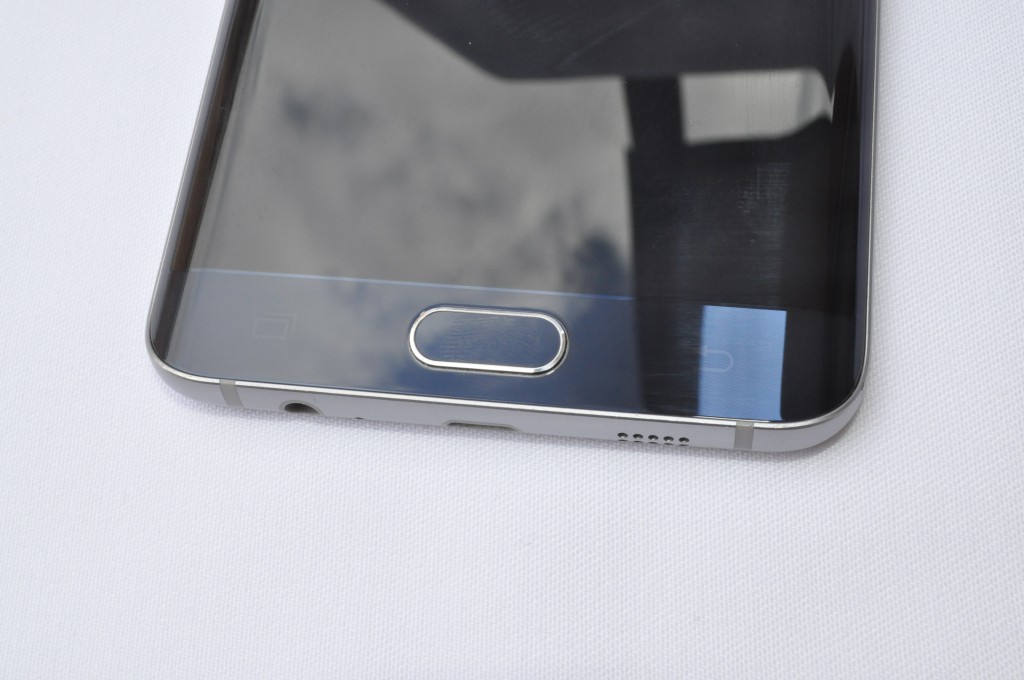
Screen
There’s only one thing to say about Samsung and screens and that is that they know what they’re doing, especially with Super AMOLED displays. The screen on the Galaxy S6 Edge+ is to say the least absolutely stunning.
The Super AMOLED display is bright, it’s vivid, it’s colour accurate, shows absolutely fantastic viewing angles and when it comes to blacks, you won’t find anything better.
The curved display does look a little off when you’re looking at it as the curve incorporates the entire screen and it takes a little getting used to when looking at it front on. The slight distortion of the curve is far from a reason to not buy the phone however but it is a little disconcerting.
It’s also this slight curve that resulted in my terrible typing on the Galaxy S6 Edge+ I tried multiple keyboards but my typing has never been worse than on this phone – be it the curve or the awkwardness of holding the phone I’m not sure, but my typing got noticeably got worse on the S6 Edge+.
So what can you use the curved display for? Well, there’s a number of utilities such as the ‘People Edge’ introduced in the smaller version that lets you access five of your contacts quickly by swiping from the edge, with the larger model Samsung has introduced the ‘Apps Edge’ a way to launch five of your most commonly used applications.
To be honest, at first load, I liked Apps Edge, but after using the phone consistently I found myself falling back into using recents and forgetting the whole thing, but if you train yourself to use it, It’s an option.
There’s definitely some options you can set with the phone’s curved display, lefties can set the App or People Edge tab to the left side for preference, and where on the edge the tab appears. Users can also choose to get coloured light up notifications when you get messages from your 5 People Edge contacts.
There’s also the notification tickers, which lets you see news, weather and Twitter updates on the Edge display, but these are not new and have been included since the Note 4 Edge. This has been improved muchly over the Note 4 Edge I used last year though, which couldn’t get the orientation right – which made the feature much more useful.
The ticker is useful, but the clock on the Edge display at night is similarly better as well and very useful – again, you can choose which side the tickers and clock show up on in settings.
The question of whether these basic additions for the Edge display add enough utility to warrant the curved display is up to you individually, but for me, it’s still like a solution searching for a problem. The features are neat, but just don’t add too much to your experience.
The added discomfort of holding the phone added with multiple mis-touches of the screen simply by holding the phone and touching the screen made for a frustrating experience at times – but there’s no doubt, that curved screen looks good.
Cracked Display
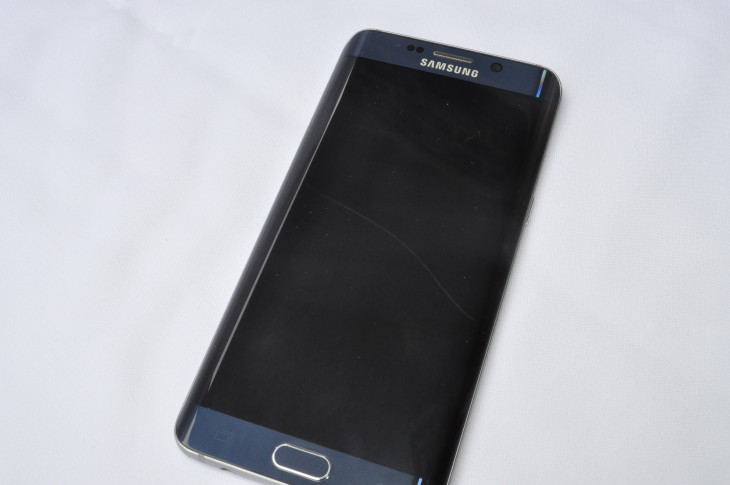
It happens, phones are mostly glass these days. Occasionally a manufacturing fault happens and your phone may come out of the box with a cracked screen. If that happens, take it back immediately the D.O.A or Dead On Arrival clause under Australian Consumer Law means you can have it immediately replaced. Don’t accept a store telling you that you have to have the unit repaired.
If however you drop the phone and with a phone as slippery as the new all glass/metal Galaxy S range, and that’s certainly possible then you’ll be up for a new screen and no, it won’t be under warranty.
The iFixit tear down for the Galaxy S6 Edge showed a repairability score of 3 out of 10. The scaled up Galaxy S6 Edge+ would be about the same. In their tear down for the smaller model, the team noted about the display ‘Replacing the glass without destroying the display is going to be very difficult’. That means that you’re going to have a lot of fun trying to repair it yourself, that is if you can find the parts.
To have the screen replaced by a third party repairer you’re looking at around $400 – in fact the two places I checked were only able to give a rough estimate as even they couldn’t find the parts yet.
Parts will be available from Samsung, but it’s one of those things you’ll have to think about. Insurance on a mobile phone plan will mitigate this somewhat but you’ll still be up for an excess charge on that anyway.
Battery life
Battery is going to be a big question on the recently announced S6 Edge+ and the Note 5. While the S6 Edge is a new variant of the S series many fans are still coming to terms with Samsung’s step in the direction of non-removeable batteries. To be honest, I’ve never swapped a battery out – and there’s no need to ‘pull’ the battery, hold the power button in and the phone resets.
Battery life is something that many people are interested in, and to be honest the phone is simply a scaled up version of the S6/S6 Edge that released earlier this year. I used the phone extensively with maps, bluetooth audio, web surfing, camera, social media, instant messaging, videos and even tethering while I was wandering around Berlin. The phone was connected to a decent HSPA+ (there’s no 4G arrangement in Germany on Vodafone roaming) and to be honest, I hit the phone hard and the battery did alright.
The average day in Berlin saw me on the go from 7am but by around 1-2pm I was hooking into a power bank. Back home and not using the maps feature but everything else I was able to get a little more out of the day, but by 5pm it was plugin time.
There’s two big pluses to the battery life on the S6 Edge+: Quick Charge and Wireless charging.
Thankfully as a new phone, I was able to top up the S6 Edge+ on the numerous Samsung wireless chargers that were dotted around booths at IFA, wireless charging has always been more a novelty to me as it’s slow – this time around though, Samsung made it fast, adopting fast charge on wireless.
But it’s not too fast – it still takes two hours to charge and frankly, I’d rather plug it in because the Quick or ‘Fast Charge’ as Samsung call it gives you 50% charge in less than 30 minutes – that’s much better for me at least – but having wireless PMA/Qi in a single device is great if you use it.
Camera
When Samsung unleashed their flagships in March, they kicked off one of the best years for mobile photography on Android we’ve seen yet. The decision to use the same 16MP sensor and f/1.9 aperture from the Galaxy S6/S6 Edge in the S6 Edge+ is a natural one considering the success story the camera on those phones have been.
The camera is fast, Samsung has included the quick launch option from previous models on the S6 Edge+ and as with those phones it’s lightning fast loading the camera app in under a second by double-tapping the home button and you’re good to go.
It’s the quick launch feature that I’ve been able to use to great benefit with a rambunctious, active 4 year old running around and I am very pleased with the results of trying to capture him in an in-focus shot without having him slow down.
Every other facet of the Camera experience on the Galaxy S6 Edge+ is, as Jason and Chris found with the S6/S6 Edge – fantastic. The quality is brilliant and there’s rarely any time that you’ll be found wanting with this camera. Low-light, bright light, fast capture, anything really, you’ll be well pleased with the Galaxy S6 Edge+.
The camera on the S6 Edge+ takes a 16MP (5312×2988) resolution 16:9 aspect capture, but if you want you can drop down to a 12MP (3984×2988) resolution 4:3 AR capture if required or as low as a 2.4MP capture if you so desire.
Camera Software
Samsung has done an impressive job with the camera, but their software still needs some work. A number of settings are hidden away and modes are separate from options – it’s still a bit of a confusing mess, at least for the casual user, but with a bit of playing around through the sub-menus you’ll find what you need.
Once you’re into the various modes like Pro mode you can set your ISO, Shutter Speed (up to 1/24000), White Balance, Tones, Scene Type and of course shoot in RAW – capturing those full images which you can edit to your hearts content on your computer at a later stage, though if you have a 32GB model that space will fill very quickly.
There’s all the old favourites still present by default: Panorama, Selective Focus, but there’s some missing like the Sound Shot and Dual Camera but you’ll find those along with other options like Animated Gif, Surround Shot and more in the downloads section – the Animated Gif tool is quite well done.
YouTube Live Stream
Possibly the biggest feature on the camera is the new Live Broadcast function, which will set up a livestream to YouTube.
The setup was frustrating – mainly trying to associate the Ausdroid account – once you’re setup though, it’s pretty simple. Live streams can be in a max FullHD resolution, your live-stream can be private – invites with a link to the stream are sent by SMS – or publicly available to everyone and the interface is simple to use, it’s essentially the same as recording video: hit the shutter button marked ‘Live’ to start your broadcast.
The only change to the setup other than that is the option to flick back and forth between the front and rear camera – definitely a good feature for experienced YouTubers to capture those all important reaction shots.
I like the YouTube Live Stream option, it’s a neat feature – though limiting it to Samsung devices (and Sony who also have YouTube streaming) is frustrating. – we very much hope this feature is expanded to other vendors.
The idea of the YouTube Live Stream supercedes other services such as Periscope and Meerkat basically due to the stream being there in perpetuity – of course you could delete the video as you still retain that control. I’m not really part of the Snapchat-style content is removed in 24 hours crowd so I guess that’s something I liked about the service.
Connectivity
Connectivity wise, the S6 Edge+ is amazing. It supports just about everything and I mean everything:
- Dual-band WiFi 802.11 a/b/g/n/ac, MIMO(2×2)
- Bluetooth® v 4.2 LE, ANT+
- USB 2.0
- NFC
- GPS, GLONASS, BeiDou
- 2G, 3G and Cat 9 4G LTE on almost all the relevant Australian bands
The only real ‘missing’ feature is that Samsung has chosen to remove the IR port on the top of the phone – a real let-down for me and there’s no real TV-Out option through something like MHL which is disappointing, but we do seem to be going more into a wireless world, so you can Chromecast features still if that helps you out.
Cat 9 LTE is available in minimal areas at the moment so unfortunately I couldn’t test that feature out, but with wider support it obviously means I could burn through my data cap in minutes as opposed to hours if required.
The Galaxy S6/S6 Edge had a number of issues with connectivity dropping when Chris and Jason reviewed the phones earlier this year. I found numerous issues in Germany, but after a great experience back in Australia I’ve put that down to international teething issues.
Of the rest of the connections (Bluetooth, WiFi, GPS) all work as advertised and apart from some intermittent bluetooth connectivity issues on headsets and connecting to the car stereo, there were no issues.
Sound
Wired headset and Bluetooth support is fine for the sound on the S6 Edge+. You’ll also get decent audio out of the single speaker at the base of the phone. It’s nothing to write home about but it’s there and it works.
Performance
Speed wise, Samsung has come a long way with their software at least in how it performs for me. There are other opinions around the team, but for my mind, the new Samsung look and feel on their software has come a long way in terms of how it responds.
The high-end Galaxy line of phones this year – Note 5, S6 (Edge/Edge+) – have moved away from the Qualcomm processors they’ve used in the past to their own Exynos branded processors, specifically the Exynos 7420 octa-core processor which uses a big.LITTLE ARM setup which brings four 1.5 GHz Coretex-A53 cores to handle the low-end ‘everyday’ tasks married to four 2.1 GHz Cortex A57 cores for higher end processing. The major change is that Samsung has scaled up to 4GB of RAM in the S6 Edge+ and it shows.
I had minimal issues with lag or waiting for apps to respond. The Camera quick launch especially was fantastically fast, so to was loading apps and games.
The S6/S6 Edge experienced significant lag when reviewed earlier in the year, but so far I’ve seen nothing to indicate that these issues have followed over to the S6 Edge+. The multi-tasking was fluid and switching into apps or bringing up a keyboard was fast and responsive.
The lack of issues could be put down to improved software – this launched with Android 5.1.1 vs the S6/S6 Edge which launched on 5.0.2 or it could be the extra 1GB of RAM but either way, it’s a smooth experience.
The S6 Edge+ comes in 32GB or 64GB versions, there’s controversially no microSD card slot in any of the high-end Samsung phones this year. The 32GB version comes with 24.91GB of free space when you load it up and it’s a decent amount of space, at least until you burn through some taking 4K video, but even then you can back that up and regain some space if you want.
And as usual, here’s the GeekBench and Antutu benchmark results.
Antutu
GeekBench
Software
Android OS
Samsung has released the Galaxy S6 Edge+ with Android 5.1.1. There’s the usual Samsung overlay on top and unlike previous versions it performs quite well. Samsung has a pretty decent reputation for updating their flagship phones to newer versions so expect an Android Marshmallow update for the S6 Edge+ soon after release of the code from Google.
Skins
The skin for the S6 Edge+ hasn’t changed majorly – if at all – from the S6/S6 Edge which Chris and Jason reviewed earlier this year. It’s improved, there’s less cruft and installed bloatware – though there is still some – but unlike previous iterations of Touchwiz, it runs pretty well.
The launcher still has all the usual ‘Samsung-ness’ with brighter colours and ‘squircles’ everywhere for icons. The Settings menu is still undeniably Samsung and Flipboard sitting a swipe off to the left is just plain annoying for someone with no intention of using it.
Still, the introduction of themes – and the introduction of stock Android themes from devoted users has gone a good way to making the whole thing a lot better, but I still long for the day I can use brilliant Samsung hardware with a stock Android experience – but after the failure of the Google Play Edition program that’s probably not going to happen any time soon, so this is as good as we’ll get.
Security
In the wake of the recent Stagefright security vulnerability, Samsung committed to a monthly security update cycle for their Android devices. They’re still working out how to get these updates to carrier based phones, but they have delivered a couple of updates to the S6 Edge+ while I’ve been using it that’s seen it resolve at least some aspects of Stagefright, but not all.
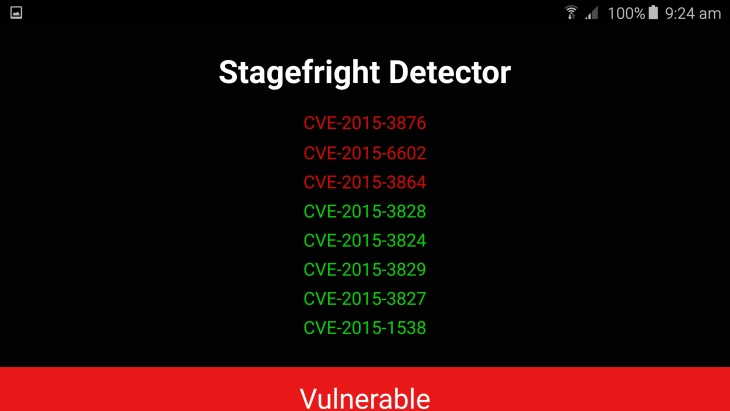
We’re following the Samsung Security blog with interest to see if there will be any more updates, but seeing as the S6 Edge+ is one of their most recent flagships, it’s pretty certain there will be more, possibly with a Marshmallowy update soon.
Bundled Apps
Bundled apps were for the most part fairly minimal,though controversially you do get the Microsoft apps – Word, Excwel, PowerPoint and OneDrove – pre-installed on the phone. They’re not even pre-installed from Google, but rather they’re installs from the Galaxy App store from Samsung but that’s not too big a deal as they seem to be updating about the same pace as the Play Store versions – though there were times I received prompts to update the apps in Google Play, a somewhat confusing experience.
All up there’s the usual array of Samsung apps available on the phone including a Memo app, My Files (File Manager), Voice Recorder and the Samsung Gear app for connecting that Samsung Gear smartwatch to your phone. You also get a Music and Video playing app for playing your local media files.
Samsung has as usual included their versions of the Contacts, Dialer, Messages and Email apps, but I also applaud them for including their own Gallery app, it’s not perfect but a local gallery is much preferred to the Google Photos app which hasn’t quite met my expectations for viewing photos locally.
Samsung has also included their usual ‘S’ apps: S Health, S Planner and S Voice. At this stage the whole ‘S’ thing is a little too much, but it’s Samsung’s way of differentiating their software offerings and trialing their services with a view to seeing what works and what doesn’t – just look at their recently shuttered Milk Video service, they do drop things that don’t see consumer adoption and these services have been round for a while so they must be working.
SideSync
An interesting addition to this years Samsung phones is SideSync a piece of software which allows you to connect your phone and your computer using a cable or just wireless and then use your phone in a window. As well as using your phone you can transfer files back and forth and it supports all operating systems – well, PC and Mac anyway.
SideSync works pretty well on both Windows and Mac, in fact for Mac it’s a darn sight better than the standard Android File Transfer tool that users are forced to use. It’s a free download from Samsung and you simply make sure you have the desktop app installed and the mobile app installed on your phone/tablet and you’re good to go.
There’s many similarities here between Koush’s recently released Vysor Chrome app, though SideSync offers an improved experience in that it can be used wirelessly and the addition of file transfer makes it a dream come true.
SideSync is very easy to setup and basically it just works. All I can say is this is nicely done.
Samsung Galaxy S6 edge+ (SM-G928I) Specifications:
- 5.7” Quad HD Super AMOLED
2560 x 1440 (518ppi)
Dual edge screen - Octa core (2.1GHz Quad + 1.5GHz Quad), 64 bit, 14 nm process
- 4GB RAM (LPDDR4)
- 32/64GB (UFS 2.0)
- Rear : 16MP OIS (F1.9) , Front : 5MP (F1.9)
- WiFi 802.11 a/b/g/n/ac, MIMO(2×2),
Bluetooth® v 4.2 LE, ANT+, USB 2.0, NFC,
Location - Accelerometer, Proximity, RGB Light, Geo-magnetic, Gyro,
Fingerprint, Barometer, Hall, HRM - Android 5.1 (Lollipop)
- 3,000mAh, Fast Charging both on wired and wireless,
Wireless Charging compatible with WPC and PMA - 154.4 x 75.8 x 6.9mm, 153g
So, what’s the verdict? Well, the phone design is still not what I’d call comfortable to use due to the slippery glass/metal construction and the thinner sides from the curved display.
The curved edge display looks absolutely stunning and will definitely woo customers in stores but in terms of usage it’s a ways off; not just in terms of hardware but in software, as I said previously, it’s like a solution for a problem that doesn’t exist.
The S6 Edge+ is a fast, good looking and responsive phone with a great camera, but get right down to it, it’s a bigger version of the S6 Edge with a bit more battery and a few software tweaks. Or to look at it another way, a curved display version of the Note 5 without the S Pen.
The choice then comes down to whether you’d get the S6 Edge+ or the Note 5 because what it comes down to is the look of the phone and whether you’d get utility out of the S Pen. The Note 5 has minimal bezel on the side anyway so it’s not that big a deal and the S Pen even if you don’t use it is infinitely more useful than what we’ve seen on the S6 Edge+.
At this stage having used the S6 Edge+ and played around with the Note 5, I’d save myself a couple of hundred dollars and grab a Note 5 – the S6 Edge+ just doesn’t ‘do it’ for me. There will be people who argue the utility of the ‘Edge’ display but from a broader perspective there’s just not enough there to warrant that extra cost.

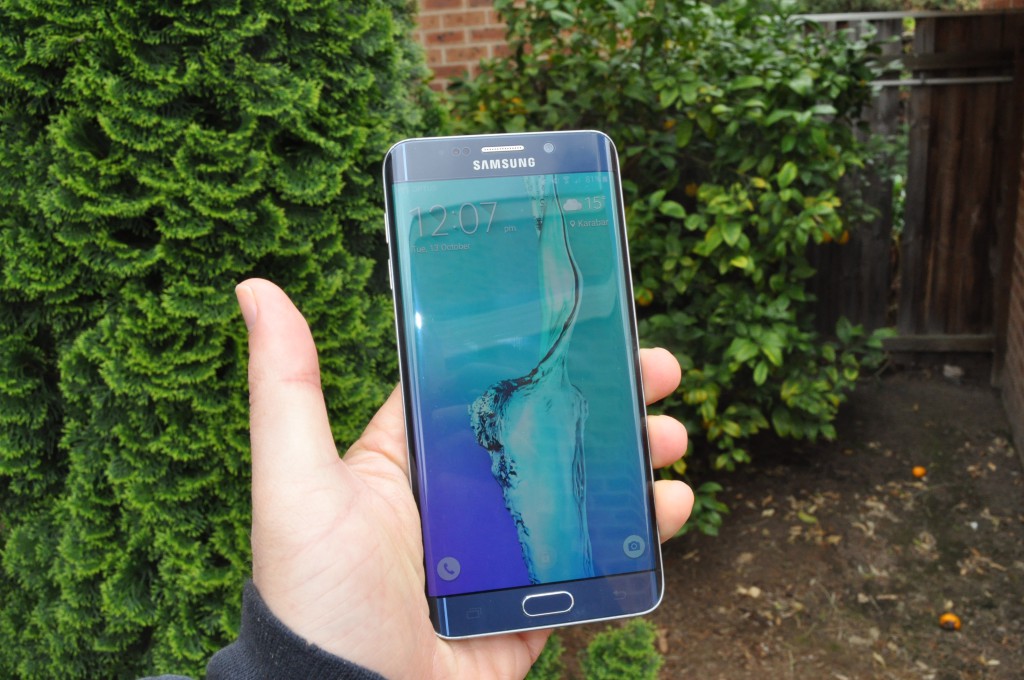
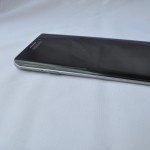

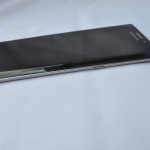


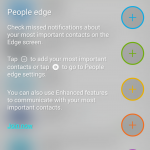
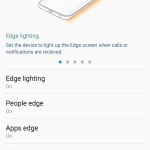
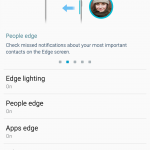
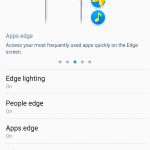

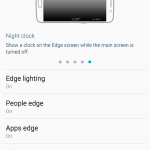
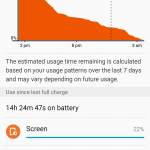
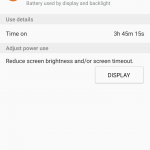
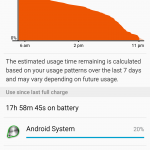
















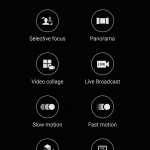

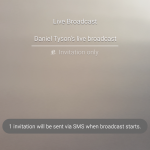


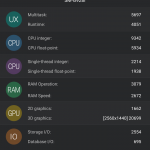
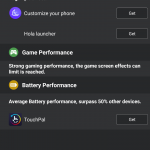
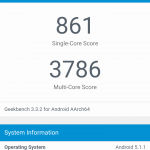
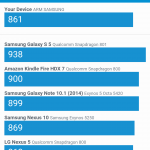


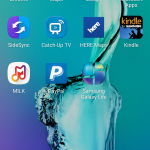



You mentioned the flaky reception , this is the biggest fault with this phone and the regular S6 all the latest high end Samsung’s have terrible antennas, I’m getting missed calls all the time on Telstra, which never happened on my HTC one M7. It’s a hardware issue that is occurring around the world the 4g LTE antennas just aren’t good.
I agree with the Cons in the review. Wish they had made it thicker with better battery and easy to hold and with no camera bump
Great review Dan, thanks.
I think I agree with you in that the Edge concept doesn’t seem that useful and when you factor in the extra cost a Note 5 or standard S6 seems the better option (I recently picked up an S6). Of course, they appear to be moving units so I don’t expect it to go away. People love “teh shineyyy”!
I think it’s another one of those cases where we need to wait it out and let Samsung figure out some more features for the edged display. I’m sure over time there will be plenty of useful features for it.
Nice username by the way.